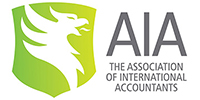The Government has published new ‘Covid Secure’ guidance following the announcement that businesses in England including pubs, bars, restaurants, hair salons, barbers, hotels and bed and breakfasts may reopen from 4 July 2020.
The latest documents, prepared by the Department for Business, Energy and Industrial Strategy (BEIS) with input from the devolved administrations in Wales, Scotland and Northern Ireland, cover the following workplaces and working arrangements:
- Close contact services, such as hairdressers, barbers, beauticians, tattooists, sports and massage therapists, dress fitters, tailors and fashion designers;
- Hotels and other guest accommodation;
- Restaurants, pubs, bars and takeaway services;
- The visitor economy, such as indoor and outdoor attractions, business events and consumer shows.
Amongst the most eye-catching specific measures contained in the new guidance documents are:
- Keeping a temporary record of customers and visitors for 21 days in restaurants, pubs, bars and takeaway venues;
- Encouraging the use of apps for ordering;
- Implementing staggered entry times to hospitality venues;
- Reconfiguring seating arrangements and introducing one-way systems around hospitality venues;
- A prohibition of live music and comedy;
- Barbers and hairdressers should wear plastic visors when working in close proximity to clients.
The new documents add to those published in May, some of which have been updated to reflect the changed one metre plus social distancing guidance:
- Construction and outdoor work
- Factories, plants and warehouses
- Homes
- Labs and research facilities
- Offices and contact centres
- Shops and branches
- Vehicles
The existing guidance documents and the new guidance documents for sectors reopening on 4 July are based on the following five principles, which have been tweaked since they were first published:
- Carry out a COVID-19 risk assessment
Before restarting work you should ensure the safety of the workplace by:
- carrying out a risk assessment in line with the HSE guidance
- consulting with your workers or trade unions
- sharing the results of the risk assessment with your workforce and on your website
- Develop cleaning, handwashing and hygiene procedures
You should increase the frequency of handwashing and surface cleaning by:
- encouraging people to follow the guidance on hand washing and hygiene
- providing hand sanitiser around the workplace, in addition to washrooms
- frequently cleaning and disinfecting objects and surfaces that are touched regularly
- enhancing cleaning for busy areas
- setting clear use and cleaning guidance for toilets
- providing hand drying facilities – either paper towels or electrical dryers
- Help people to work from home
You should take all reasonable steps to help people work from home by:
- discussing home working arrangements
- ensuring they have the right equipment, for example remote access to work systems
- including them in all necessary communications
- looking after their physical and mental wellbeing
- Maintain 2m social distancing, where possible
Where possible, you should maintain 2m between people by:
- putting up signs to remind workers and visitors of social distancing guidance
- avoiding sharing workstations
- using floor tape or paint to mark areas to help people keep to a 2m distance
- arranging one-way traffic through the workplace if possible
- switching to seeing visitors by appointment only if possible
- Where people cannot be 2m apart, manage transmission risk
Where it’s not possible for people to be 2m apart, you should do everything practical to manage the transmission risk by:
- considering whether an activity needs to continue for the business to operate
- keeping the activity time involved as short as possible
- using screens or barriers to separate people from each other
- using back-to-back or side-to-side working whenever possible
- staggering arrival and departure times
- reducing the number of people each person has contact with by using ‘fixed teams or partnering’
Businesses and organisations with more than 50 employees reopening from 4 July, and those already open, are expected to publish their risk assessments online, while all employers are expected to display a signed poster, which can be downloaded with the guidance here Staying COVID-19 Secure in 2020. This includes contact details for the Health and Safety Executive.
The guidance documents relate to workplaces rather than sectors, meaning employers may need to have regard to more than one set of guidance in their risk assessments and reopening plans.
For instance, the guidance for close contact services, vehicles and working in other people’s homes could be relevant to a mobile hairdressing service.






